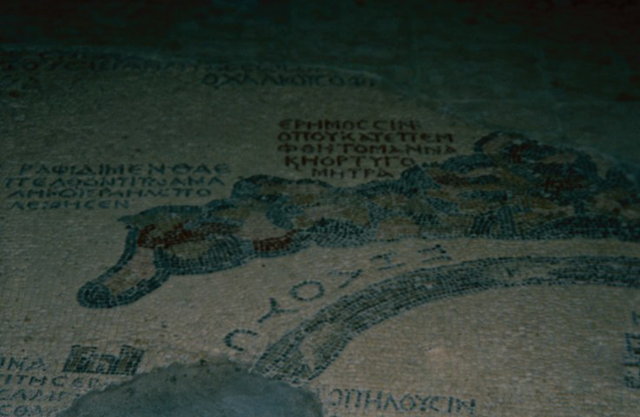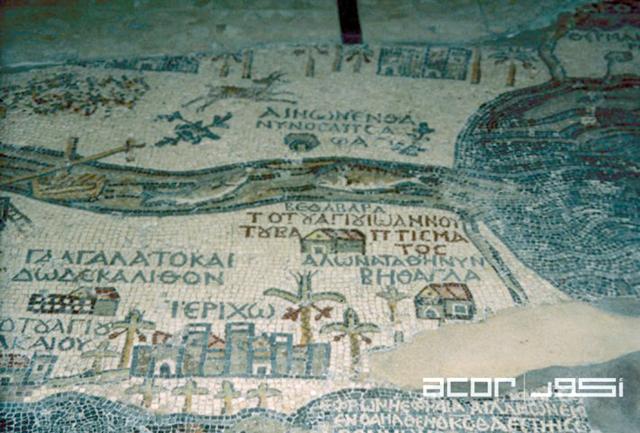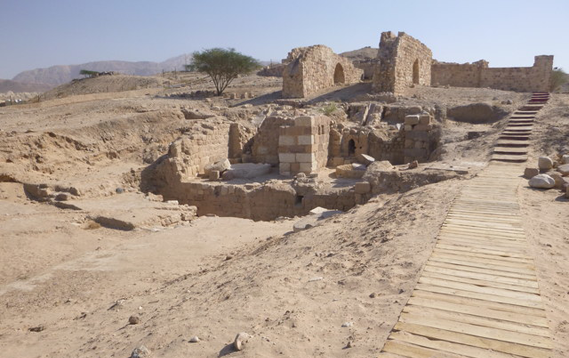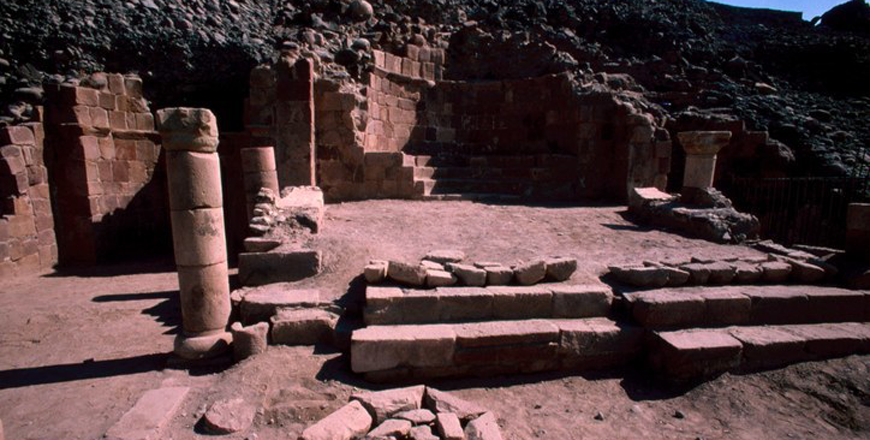You are here
Mosaics in Ummayad Caliphate: Craftsmanship, patronage, cultural insights
By Saeb Rawashdeh - Dec 30,2023 - Last updated at Dec 30,2023

A segment of the Madaba Map at the Church of St George in the downtown of Madaba (Photo courtesy of ACOR)
AMMAN — Mosaics decorated some of most prestigious buildings in the Ummayad Caliphate: Bath houses, mosques, palaces and private villas. The latest research reveals that the shift between the late antiquity and the early Islamic period was gradual and similar artistic patterns characterised both epochs.
Epigraphic evidence shows that instead of big schools and workshops small groups of craftsmen, often from the same family, produced mosaics. Sometimes, commissioned mosaicists would work on a certain project and separate after completing the job. Mosaicists would spend their whole career working in the same region and in the same area where they lived.
“Regular local commissions would have been needed to keep such a pool of mosaicists in training. Madaba and its surrounding settlements clearly met this requirement between the 6th and 8th centuries, and major cities such as Jerusalem presumably supported even larger numbers of artisans,” noted a British art historian Beatrice Leal, adding that this was largely due to an active culture of ecclesiastical patronage; the majority of known commissions of mosaics in the early mediaeval Mediterranean, either on floors or walls, were for churches.
Stone mosaics as a result of their durability were used for the floor while glass mosaics were often used for walls.
“Firstly, the materials were not completely segregated. Many wall mosaics, including those in the Great Mosque of Damascus, use stone tesserae for pink, red and white. Some floor mosaics, both in the Byzantine and early Islamic period, included glass tesserae to highlight certain features,” Leal elaborated adding that this suggests that floor and wall mosaicists were supplied from the same sources, and probably they were equally skilled in cutting tesserae from the two materials.
Secondly, many of the buildings that had floor mosaics also had wall mosaics.
The upper walls have gone from most of the churches in which mosaic floors have been excavated, so the decoration of their apses has been lost, Leal said, noting, “But both from archaeological finds of loose glass tesserae, and from written references, we know that apse mosaics were common across the Byzantine world. Floor and wall mosaicists therefore depended on the same patrons for their living, and may also have been on-site at the same time”.
Thirdly, the skills needed for the two media are almost identical: Chipping tesserae into shape, mixing and laying plaster and composing the designs. Which leads to the fourth point, “that there was substantial crossover in motifs between floor and wall mosaics”.
The nave floor of St Stephen’s at Umm Al Rasas in Jordan was laid in 718/19AD, approximately three years after the Great Mosque was completed.
“It depicts cities and buildings along a river, as well as trees and acanthus scrolls, as do the wall mosaics in the mosque. The motifs on the church floor are simpler. But various details — such as roofs depicted as parallelograms sticking out from tower walls, or U-shaped acanthus leaves with lines of black tesserae inset around the curve, or trees with solid areas of dark tesserae surrounding and separating the lighter leaves — are shared,” Leal underlined.
One of such mosaics is the Madaba Mosaic Map from 6th century AD which depicted Jerusalem, Zoara on the Dead Sea, Baptism site and many other localities of the day.
The name of the artist is unknown but in 614AD Madaba was briefly occupied by the Sassanid Empire, the major disaster occurred in 746AD when a catastrophic earthquake hit the whole region causing Madaba to be abandoned.
“The sixth-century mosaic map of the Holy Land created on the nave floor of the church in Madaba, discovered in 1884 during the construction of a modern church and restored in 1965, is not only a remarkable example of the excellence of Byzantine mosaic art, but is also a valuable historical resource for understanding the towns and Christian holy places of the region,” noted Professor Joan Taylor from King’s College, London.
The artists of the Madaba Map “had a good eye for detail and it did not only apply to detail”. This attention applies not only to buildings and towns, but also to features of the landscape of holy land.
The mosaic artists did not like excessive empty space or repetitive patterns, and filled these with motifs representing features of the environment, Taylor continued, adding that the fish in the Jordan River change direction when they encounter the salty water of the Dead Sea. It depicts that ancient mosaicists were aware of the difference between freshwater and the highly saline Dead Sea.
Also depiction of ships carrying different commodities is the evidence of highly active commercial hubs on both sides of the lake.
“To our knowledge, however, no one has looked specifically at the plants shown in the map as indicating the economic value placed on certain crops in the region near Madaba, and the artist has made a point of being extremely precise about recording important trees. Date palms are shown on the Madaba mosaic map as being grown around Scythopolis [barely shown on far-left], Phasaelis, Jericho, Bethagla, Bethnambris, Livias, Callirhoe and Zoara,” Taylor highlighted.
Related Articles
AMMAN — The Madaba Map in the St George Church, 30km southwest of Amman, can be traced back to the mid-sixth century AD, according to Britis
IRBID — Zoara, or modern-day Ghor Safi, was as an important commercial metropolis according to Roman and Byzantine written sources, said a G
AMMAN — The Dead Sea region has been inhabited since prehistoric times, with thousands of graves dating back to the Neolithic and Bronze Age














